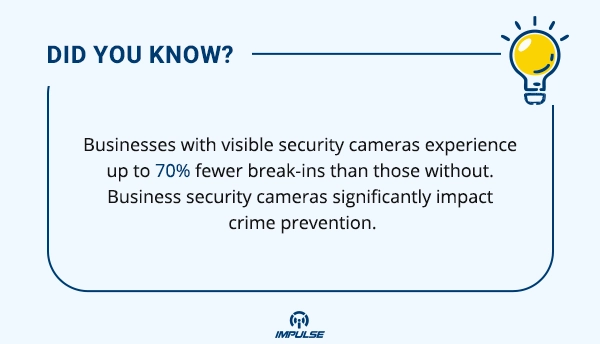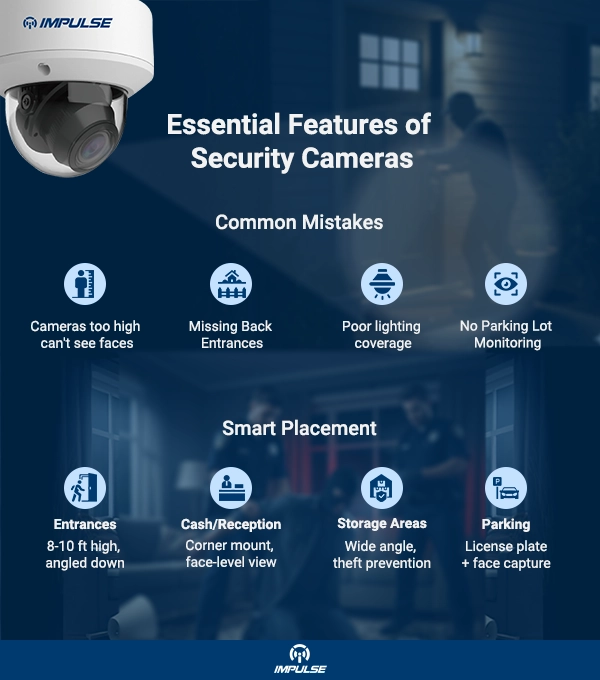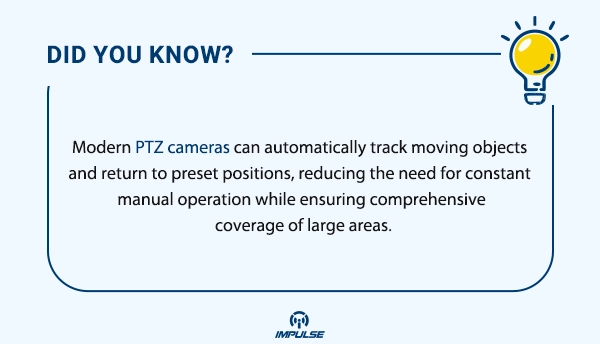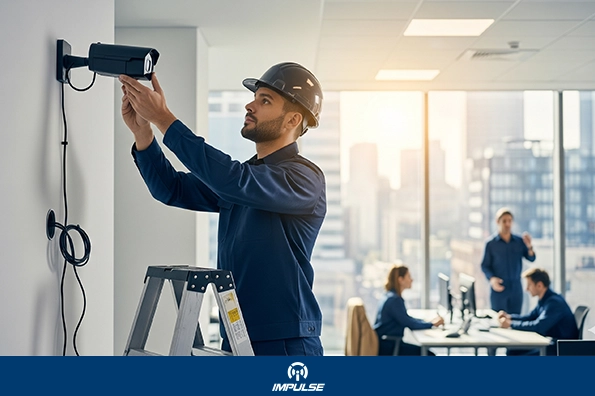As a business owner, protecting your assets, employees, and customers is non-negotiable in today’s security-conscious world. The rising threats of theft, property damage, and unauthorized access make robust security measures essential for businesses of all sizes. CCTV camera installation has become the cornerstone of modern business security strategy not just deterring potential criminals but also providing critical evidence when incidents occur.

However, installing a CCTV system setup isn’t as simple as mounting cameras randomly around your premises. Strategic planning, technical expertise, and careful consideration of multiple factors are essential for creating an effective surveillance network. Whether you’re a small retail store or a large manufacturing facility, understanding the key factors to consider before installing CCTV will help you make informed decisions that protect your investment and ensure optimal security coverage.
This comprehensive guide will walk you through the five essential factors that every business owner should consider when planning their commercial CCTV installation, helping you create a surveillance system that meets your specific security needs while maximizing return on investment.
Factor 1: Strategic Camera Placement and Coverage Area Analysis
The foundation of any successful CCTV installation for business lies in strategic camera placement. This critical factor determines the effectiveness of your entire surveillance system and requires careful analysis of your business premises.
Understanding Your Security Zones
Before installing any cameras, conduct a thorough security assessment to identify high-risk areas, entry points, and blind spots. Consider these key areas:
- Perimeter Security: Main entrances, loading docks, and emergency exits require comprehensive coverage
- Internal Monitoring: Cash registers, inventory storage areas, and employee workspaces
- Parking Areas: Customer and employee parking zones often face security challenges
- Restricted Access Zones: Server rooms, executive offices, and sensitive equipment areas
Coverage Optimization Strategies
Professional surveillance system installation guide principles suggest overlapping camera fields of view to eliminate blind spots. Consider the height, angle, and lens specifications when positioning cameras. For comprehensive coverage, the 5MP Motorized IR-Dome Camera (IMP-LX-DOMZ-500-2812) offers exceptional versatility with its motorized lens, allowing remote adjustment of viewing angles and zoom levels up to 50 meters in complete darkness.

Avoid costly mistakes – Let Impulse CCTV design your perfect layout
Lighting Conditions and Environmental Factors
Evaluate lighting conditions throughout different times of day and seasons. Areas with challenging lighting require cameras with advanced features like Wide Dynamic Range (WDR) and superior low-light performance. The Fixed Lens Network Bullet Camera (IMP-LX-BLTF-300-3600) excels in variable lighting conditions with its built-in WDR technology and 50-meter IR range.
Factor 2: Camera Technology and Specification Requirements
Selecting appropriate camera technology forms the backbone of your best CCTV cameras for business security strategy. Modern surveillance systems offer various camera types, each designed for specific applications and environments.
Resolution and Image Quality Considerations
High-resolution cameras provide clearer images and better identification capabilities. 5MP cameras have become the industry standard for commercial CCTV installation, offering four times the detail of traditional 1MP systems. This enhanced resolution proves crucial for facial recognition, license plate reading, and evidence collection.
Specialized Camera Types for Different Applications
Fixed vs. Variable Focal Length: Fixed cameras offer consistent coverage for specific areas, while varifocal cameras provide flexibility. The Varifocal Network Box Camera (IMP-LX-BOX-300-0000) features a 5mm to 50mm varifocal lens, making it ideal for applications requiring adjustable zoom capabilities.
PTZ Capabilities: For large areas requiring active monitoring, PTZ (Pan-Tilt-Zoom) cameras offer unmatched versatility. The PTZ IP Network Camera (IMP-CHX-PTZ-200-3016UW) provides 40X optical zoom with 200-meter IR range, perfect for monitoring expansive parking lots or perimeters.

Environmental Durability and Weather Resistance
Consider your local climate and environmental conditions when selecting cameras. Outdoor installations require weatherproof ratings (IP65 or higher), while indoor cameras may prioritize aesthetics and discrete mounting options.
Factor 3: Network Infrastructure and Connectivity Planning
Modern CCTV system setup relies heavily on network infrastructure, making connectivity planning a crucial factor in installation success. Poor network planning can result in video lag, connection drops, and system failures.
Bandwidth Requirements and Network Capacity
Calculate total bandwidth requirements based on camera count, resolution, and frame rates. A 5MP camera typically requires 8-12 Mbps of bandwidth, depending on compression settings and activity levels. Ensure your network infrastructure can handle peak loads without affecting other business operations.
Power over Ethernet (PoE) Implementation
PoE technology simplifies installation by delivering both power and data through a single cable. Most modern IP cameras support PoE, reducing installation complexity and costs. Plan for adequate PoE switch capacity and backup power solutions to maintain system operation during power outages.
Storage Solutions and Data Management
Determine storage requirements based on recording duration, camera count, and video quality. Consider both local and cloud storage options, with hybrid approaches offering optimal redundancy and accessibility.
Factor 4: Legal Compliance and Privacy Considerations
Understanding legal requirements and privacy regulations is essential when implementing business security cameras. Compliance failures can result in legal consequences and damage to your business reputation.
Privacy Law Compliance
Research local, state, and federal privacy laws governing surveillance systems. Key considerations include:
- Employee Notification: Most jurisdictions require informing employees about surveillance
- Public Area Restrictions: Limitations on monitoring public spaces adjacent to your property
- Audio Recording Regulations: Stricter rules often apply to audio surveillance
- Data Retention Policies: Legal requirements for storing and disposing of surveillance footage
Signage and Notification Requirements
Proper signage serves dual purposes: legal compliance and crime deterrence. Install clear, visible signs indicating surveillance areas and recording policies. This transparency builds trust with employees and customers while meeting legal obligations.
Data Security and Access Control
Implement robust access controls and data security measures to protect surveillance footage from unauthorized access or tampering. Regular security audits and password updates maintain system integrity and legal compliance.
Factor 5: System Integration and Future Scalability
A well-planned CCTV installation checklist must account for current needs and future expansion possibilities. System integration capabilities and scalability planning prevent costly overhauls as your business grows.
Integration with Existing Security Systems
Modern surveillance systems should integrate seamlessly with access control, alarm systems, and building management platforms. This integration creates a comprehensive security ecosystem that enhances overall protection while simplifying management.
The AI Box 16-Channel System (IMP-AiBX-16CH) exemplifies advanced integration capabilities, supporting face recognition, passenger flow analysis, and intelligent video analysis across 16 channels with low power consumption and flexible deployment options.
Scalability and Expansion Planning
Design your system architecture to accommodate future growth. Consider factors such as:
- Additional Camera Capacity: Ensure your recording system can handle more cameras
- Storage Expansion: Plan for increased storage needs as you add cameras
- Processing Power: Advanced analytics require adequate processing capabilities
- Network Bandwidth: Account for increased data transmission requirements
Remote Monitoring and Mobile Accessibility
Modern businesses require remote access capabilities for effective security management. Ensure your system supports mobile applications and web-based interfaces for monitoring from anywhere, at any time.
Professional Installation vs. DIY Considerations
While some business owners consider DIY installation to reduce costs, professional how to install CCTV cameras for business expertise offers significant advantages:
Technical Expertise Benefits
Professional installers bring specialized knowledge of optimal camera placement, network configuration, and system optimization. Their experience helps avoid common pitfalls that can compromise system effectiveness.
Warranty and Support Advantages
Professional installation typically includes warranties on both equipment and labor, plus ongoing technical support. This peace of mind proves invaluable when system issues arise or expansion becomes necessary.
Compliance and Code Requirements
Professional installers understand local building codes, electrical requirements, and safety regulations, ensuring your installation meets all legal requirements while maintaining insurance coverage.
Conclusion
Implementing an effective CCTV camera installation for your business requires careful consideration of multiple interconnected factors. From strategic camera placement and technology selection to legal compliance and future scalability, each element plays a crucial role in creating a surveillance system that truly protects your investment.
The five essential factors outlined in this guide—strategic placement, appropriate technology selection, robust network infrastructure, legal compliance, and system integration—form the foundation of successful commercial CCTV installation. By addressing each factor systematically and working with experienced professionals, you can create a surveillance system that not only meets your current security needs but adapts to future challenges and growth.
Remember that business security cameras represent a long-term investment in your company’s safety and success. Taking time to properly plan and implement your surveillance system installation guide principles will yield dividends in enhanced security, reduced losses, and peace of mind for years to come.
Don’t compromise on security with low-quality cameras. Impulse supplies premium surveillance equipment with expert guidance to ensure you get the right system for your business needs.


